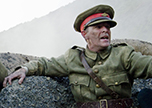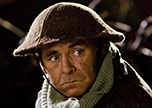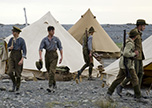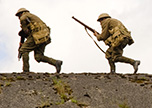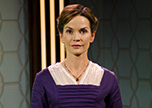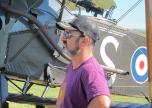« War News
Anzac Shame: The Surafend Massacre
Description
Available to rent or download on Vimeo
In this week’s episode of War News, correspondent Joe Stevens (Paul Yates) reports on a dark and relatively unknown chapter in New Zealand’s military history, one that has left a stain on the Anzac name: the slaughter by Anzac troops of civilians in the Arab village of Surafend.
Stevens also meets some of the thousands of New Zealand horses shipped off to war, while War News anchor Ray Harkness (Mark Mitchinson) speaks to highly controversial Kiwi safe sex campaigner Ettie Rout (Erin Banks) whose name was banned in some local newspapers because of her work to protect soldiers from STDs.
War News, a fictional WWI current affairs show based on factual events, was created by the Gibson Group with NZ On Air’s prestigious Platinum Fund. The series transports viewers to WWI by placing a TV current affairs team at the coalface of the war.
In this episode, Middle East war correspondent Joe Stevens is at the ANZAC camp in Palestine, with the New Zealand Mounted Rifles, whose men have distinguished themselves in the three-year long Sinai-Palestine Campaign. War News writer David Brechin-Smith was struck by the sense of brotherhood that grew among these troops who fought for years alongside each other.
“Many Kiwi soldiers weren’t on the Western Front for as long as those guys on their horses were in Sinai and Palestine,” says Brechin-Smith. “They were together for more than three years and the bonds grew strong over that time.

“One thing that's touched on in this episode is this idea that at some point in a war you stop fighting for the cause – for King and Empire in this case – because you realise what you’re really fighting for is the survival of your mates. This other stuff, the grander cause, becomes less important. It's about who's fighting alongside you.”
The danger is when loyalty spills over into mob mentality, as it did when New Zealand soldier Trooper Leslie Lowry was murdered in December 1918, a month after war in the Middle East was over. Angered by regular thieving by locals and frustrated by what they perceived as an inadequate response to the murder by British authorities, Anzac troops took it upon themselves to find the culprit. They ransacked Surafend village and a neighbouring Bedouin camp, killing and wounding dozens of male villagers.
“There are a few myths around WWI, and I think this series helps to explode some of them”, says Brechin-Smith. “The Anzac hero myth is undermined by what happened at Surafend, it's a layer to the Anzac story that will surprise a lot of people.”
Shot on the Wainuiomata coast near Wellington, the episode also features the story of the thousands of brave ANZAC horses, of which only four are known to have come home. For Brechin-Smith, this was a particularly moving part of the series.
“They were uprooted from the lush pastures of New Zealand and shipped in cramped conditions to the sand and heat of Egypt,” he says. “I felt enormous sympathy for them. Unlike the men, the horses had no choice in going to war.
“They're magnificent animals. They showed bravery and resilience and endurance, just like any good soldier. At the end of the report, Stevens says that when a soldier displays bravery and courage they often get a medal. What does a horse get? Nothing."

War News. Prime Sunday 13 July 2014



